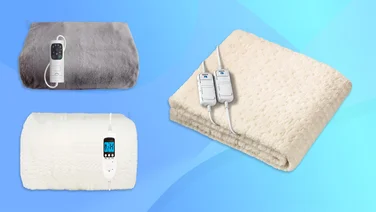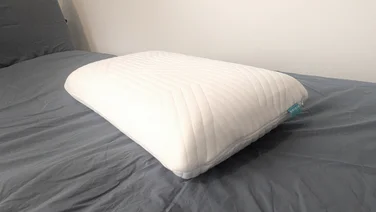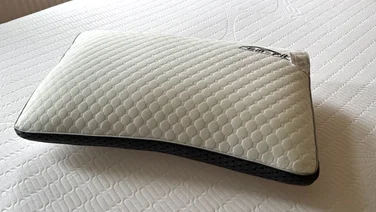To help us provide you with free impartial advice, we may earn a commission if you buy through links on our site. Learn more

The average person spends around a third of their lifespan sleeping, so it’s no surprise that the majority will want to make that experience as pleasant as possible. And the best way to ensure you get a quality night of sleep is to make sure your bed sheets are as clean as possible.
While cleaning sheets isn’t a chore that anyone is likely to enjoy, the same can’t be said for the feeling of coming home at the end of a long, hard day and throwing yourself into a bed made up of clean, fresh-smelling bed linen. So how often should you be cleaning your sheets, and what is the best method for achieving that crisp, freshly laundered feeling? Well, fear not: below, we reveal all you need to know about how to wash bed sheets, offering tips and step-by-step instructions to get your bed linen looking, smelling and feeling its best.
READ NEXT: Best mattresses
What type of bedding do I have?
Bedding is available in a variety of materials, each with their own care instructions for keeping them clean. For example, linen bed sheets tend to be more robust and so require less frequent washing than sheets made of bamboo or cotton.
Cotton can withstand higher temperatures, so can be washed on a hot water cycle, whereas satin or silk sheets will need to be washed at lower temperatures. Some items – silk pillow cases, for example – may not be suitable for cleaning in your washing machine at all, instead requiring you to hand-wash them in cold water with a little detergent. In addition, you’ll need to refrain from using bleach and fabric softener on silk sheets.
How often should I wash my bedding?
Bedding should be washed at least every two weeks, however once a week is preferable, to keep it free of dirt, sweat and dead skin cells. This includes pillowcases as well as the sheets and duvet covers. Pillowcases, in particular, frequently come into contact with sensitive areas such as your eyes and face, so it’s important to keep them clean.

Those who suffer from asthma or allergies might need to consider washing even more frequently than once a week, because a buildup of dust mites and dead skin cells in sheets may well be exacerbating such conditions and lead to poor quality sleep. Changing your sheets frequently can also increase your chances of spotting any potential bed bug infestations, and washing them at a high temperature can help kill them off. Though if you do have bed bugs you’ll need to enlist professional help to eradicate them from your home completely.
Your sleeping style may also inform how often you wash your bedsheets. If you tend to sleep “hot”, perspiring often overnight then, again, you’ll want to consider washing your sheets more regularly. The same is true if you have pets that sleep in your bed. Habits such as showering or bathing before bed, and removing all traces of makeup before getting in, will help keep your sheets cleaner for longer.
READ NEXT: Emma vs Simba: Which is better?
Can I put my stained sheets directly into the washing machine?
If your sheets have picked up any stains, then it’s best to tackle these specific areas first, before loading the sheets into the washing machine. But remember to first consult the care label to ensure that any product you apply is suitable and won’t cause damage.
Treat stains with a pre-wash stain remover such as Vanish, and let it set on the affected area before washing. If you’re dealing with a particularly stubborn stain then you may need to repeat the process a few times to get it out.
Once any stain is out and your sheets washed, you’ll want to air-dry them, rather than pop them into a tumble dryer. The process of tumble drying can permanently bake in stains, so if at all possible you’ll want to dry your sheets naturally.
Can I put my duvet in the washing machine?
While your duvet doesn’t have to be washed as frequently as your bedsheets, it should be washed a minimum of every six months to ensure it’s free of dust mites. The majority of duvets should be perfectly fine to put in the washing machine; but there’s always an exception to the rule, so check the label before you go ahead.
For those wondering how best to clean their pillows, check out our dedicated guide on ‘How to wash your pillows’ and a more specific guide on ‘How to wash your memory foam pillow’.
READ NEXT: Best firm mattress
How to wash your bed sheets: Step by step
Below, we offer guidance on how best to clean your bed sheets. However, as mentioned, always check the care label on your bed linen to determine the correct washing instructions for your sheets.
1. Start by stripping down your bedding: remove your duvet cover, bedsheets and pillow cases and prepare them for cleaning in your washing machine, separating the lights from the darks to avoid any colour transfer. A helpful tip is to have a spare set of clean bedding ready to replace the set you’ve just stripped, so you don’t have to wait until it’s washed and dry to have your bed ready for use again.
2. As mentioned previously, check the care labels to determine the correct temperature for washing. Opting for too high temperatures could result in damaging materials, while too low may not effectively eradicate all the bacteria lurking on your bedspread. If you remain unsure, check out our handy guide to laundry and washing machine symbols. Note, too, that some items will be professional dry clean only, which will be specified on the care label.
3. Check for any stains on your sheets – such as blood, wine or coffee – and pre-treat these before loading them into the machine.
4. Don’t overload the washing machine: your sheets will need adequate room to spin in the drum without bunching up. If the machine is too full it can cause wrinkling and piling of your items, and in some cases could even cause damage to the sheets. Bedding is best washed on its own, as opposed to with other laundry items such as t-shirts or towels.
5. Now select the right setting on your washing machine. Modern washing machines feature numerous options, and you can become confused. Luckily, most models should include a designated setting just for sheets, which will make things a lot easier. If your machine doesn’t have a specific setting for bedding, then just use the “normal” or “regular” cycle.
6. Once the wash cycle is complete, remove sheets from the machine as soon as possible to avoid wrinkling and hang them out to dry. If you don’t have the space to air-dry them, put them in your tumble dryer on a medium setting. Once they’re dry, you can enjoy all the benefits of soft, freshly washed bed sheets.






